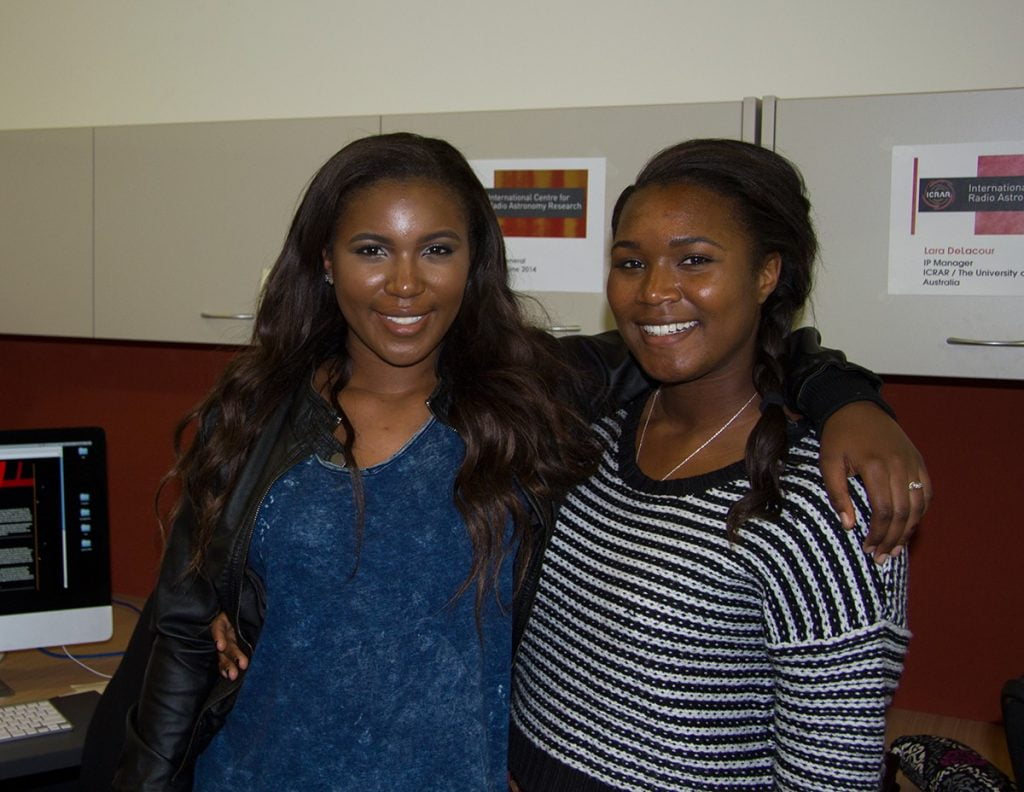Wednesday the 18th of June 2014
Leilah and Olivia Diong spent a day at ICRAR while on a trip to Australia from the United States.
Upon my arrival, the welcoming and exuberant crew gave me a thorough tour of their facilities. They shared the elaborate and extensive work they had been doing pertaining to radio telescopes. I was completely taken aback at just how much effort was devoted to the creation of the vast structures set up in Western Australia to record their data.
After the tour, I was able to sit down with Professor Simon Driver as he broke down the hierarchy of the universe. Commencing at the broad subject of the universe to specifying and classifying the three distinct types of galaxies: elliptical, spirals, and irregulars, he allowed me to understand the work of an astronomer and how they begin to grasp the concepts of the universe. Immediately following his explanation, I went back to my work desk to classify 1,000 different galaxies, which I found quite mind stimulating. After our lunch break, we went outside to observe the sun and it’s spots. After learning about the Solar Maximum, which happens every 11 years, we experimented with the different eye pieces and zooming in and out of the images. Next we had an interactive dialogue with Professor Gerhardt Meurer about the transformations and collisions of galaxies. He shared his work and notes with me on his studies of faraway galaxies. We were able to discuss the reactions and the observations presented in the online pictures. We then incorporated our newfound knowledge to hunt for black holes and radio jets in the galaxies. It was mind blowing at how the stars could erupt and expand through the universe. Immediately after, we went over the color spectrums of galaxies and by observing the colors, we were able to determine the age and the distance of the stars. After a long day of extensive studies, my mind began to wonder and I learned several interesting facts about space.
All in all, I enjoyed learning about the world around me. It was quite humbling to know that the human race is such a small part of the universe. People quite often like to think that they are the center of the world when in fact we are merely half the size of a speck in the universe. I will definitely want to continue my education in the extra-terrestrial studies.
-Leilah
Walking into the Astronomy building of UWA this morning I anticipated the full day ahead of me in which I would learn a lot. This experience surpassed my expectation of how much my brain would be challenged by attempting to understand the complicated and vast universe beyond the earth’s boundaries. We began with a tour of facilities on which we were introduced to the various projects that ICRAR has participated in. We then moved on to learning about the different kinds of galaxies including: spiral, elliptical, and irregular galaxies. Together, my sister and I were able to sort through 1000 galaxies, placing them in their appropriate categories. After a short lunch break, we continued on our journey of the universe and learned about the black holes and distant galaxies. Overall, this experience was interesting, informative, and mentally challenging. I would recommend this program to anyone interested in pushing their mental limits and learning a lot while you are at it.
-Olivia
